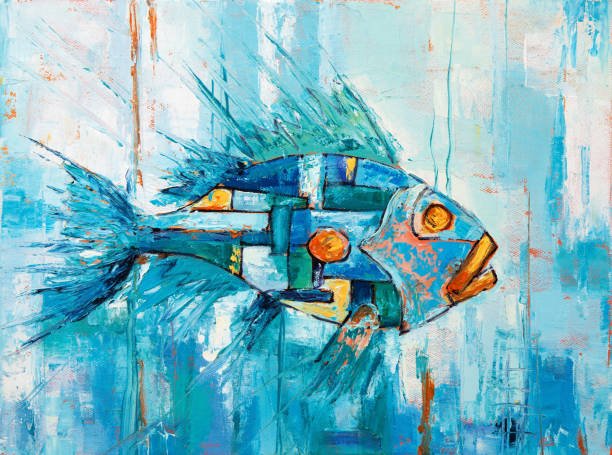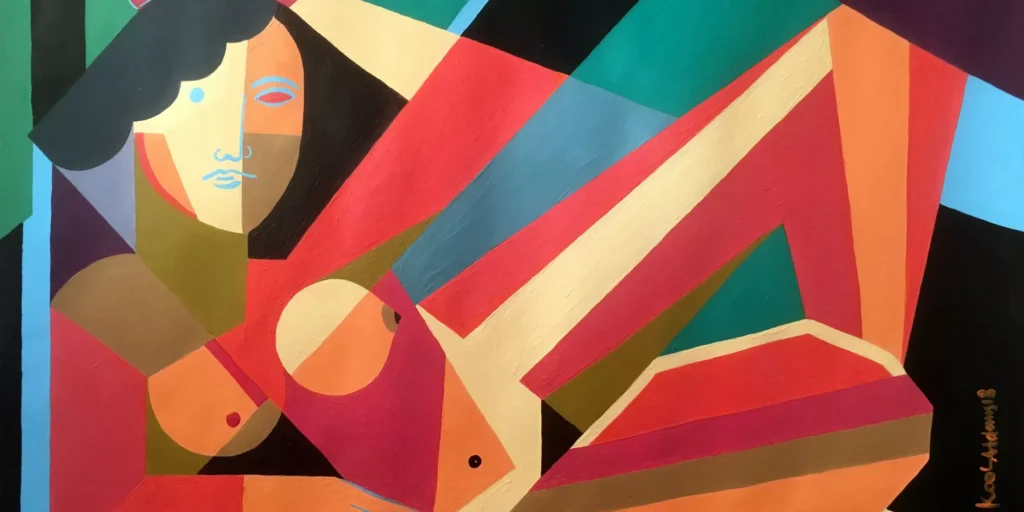Art, constantly evolving, reflects not only the technical advances of its time but also the values and anxieties of the world around it. One of the most striking aspects of this evolution is fragmentation — a concept that stood out with Cubism and continues in today’s NFT digital creations.
From the early 20th century to blockchain innovations, visual and conceptual fragmentation has shaped artistic vision. It breaks the idea of unity and creates new ways to see, interpret, and consume art. From Cubism to digital media, this logic remains vibrant, provocative, and revolutionary.
Cubism: The Origin of Visual Fragmentation
Cubism emerged as a radical break from Renaissance traditions, which emphasized linear perspective and realistic representation. Led by Pablo Picasso and Georges Braque, the movement proposed a geometric breakdown of forms. Reality was “broken” into angles and facets that coexisted on a single canvas.

According to art historian Ernst Gombrich, in the classic The Story of Art, Cubism “marked the replacement of visual imitation by conceptual analysis” (Gombrich, 2000). Rather than showing what the eye sees, it showed what the mind understands — simultaneously and from multiple perspectives.
This new gaze broke boundaries: not only painters, but also sculptors and even writers began to explore fragmentation as an expressive tool. The result was a profound shift in 20th-century aesthetics, paving the way for modern movements.
NFTs and the Fragmentation of Artistic Ownership
With the advent of digital technology and blockchain, art fragmented once again — this time in terms of ownership, authorship, and circulation. NFTs (non-fungible tokens) are unique digital files recorded on a blockchain that assign value and authenticity to virtual artworks.
Just as Cubism challenged how we perceive objects, NFTs challenge the traditional notion of ownership. Today, a work can be sold in digital fragments or in programmed, numbered editions. Additionally, artists gain new ways to monetize and control their work.
Artist Beeple, for instance, sold the piece Everydays: The First 5000 Days as an NFT for $69 million. Christie’s — a traditional auction house founded in 1766 — handled the sale, legitimizing this new art format. The event is considered a milestone in the history of digital art.
Moreover, platforms like OpenSea and Foundation have built an artistic ecosystem based on fragmentation: artists create, share, and sell their work without intermediaries.
Fragmentation as a Language of Continuous Disruption
Fragmentation is no longer just aesthetic or technological — it becomes a language. It reflects the contemporary world, marked by information overload, multiple narratives, and parallel realities.
This logic also appears in museums and curatorial practices. MoMA (Museum of Modern Art), for example, has hosted exhibitions that bring together digital and Cubist works under shared themes, acknowledging the intersection between past and present. On its website, visitors can explore collections that show this transition both visually and conceptually.
Theorist Nicholas Bourriaud, in Relational Aesthetics (1998), observes that contemporary art no longer seeks to represent the world, but to “construct worlds.” This construction is often done with fragments — digital or physical pieces that the artist rearranges to create new meaning.
Just as Cubism initiated the breakdown of a single viewpoint, NFTs promote total decentralization of art. Both movements reject the fixed whole in favor of the multiple, the hybrid, and the decentralized.



